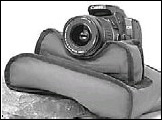CHOOSING A FEED: Here’s a guide to what’s involved in picking a service provider
Jim Jamieson
Province
You succumbed to all the buzz and just bought your first high-definition television.
Doing all the due diligence around that purchase was probably taxing, but don’t kid yourself into thinking your job is finished.
Sure, the picture from your regular TV feed — cable or satellite — is clearer with the new set. But why buy a Ferrari and drive it in first gear?
So the next question is: Where do I get my HD channels from?
At first glance, it probably looks easy: Just pick one of the four options available and away you go. But after a little examination it becomes clear that the decision is far from simple.
The first thing to realize is we are in the midst of a major transition period between analogue and digital/HD TV — and, as in the ancient Chinese curse, we’re living in interesting times.
Another thing you’ll quickly find: There is less HD content out there than you might have expected — and what is there is uneven in quality.
And each of the TV providers — depending on your circumstances, budget and viewing interests — may or may not be the best route for you.
There are two well-known options available: the cable suppliers, notably Shaw Communications, and the satellite-TV guys, notably Shaw-owned Star Choice and Bell ExpressVu. Also, Telus, the Burnaby-based telecommunications company, has already launched its TV product but currently has HD content only in trials and will offer it commercially later this year.
But there is a lesser-known fourth option, though it is probably not suitable at the moment for most people — over-the-air broadcasts.
Currently, the best-quality HD signal you can get is through an antenna, said Greg Gilmour, an independent seller and installer of satellite communications equipment, mostly for high-speed Internet access.
“My No. 1 choice would be off air via TV antenna,” said Gilmour.
From his home in Aldergrove, he gets 24 HD channels, most from the U.S.
“We watched the Super Bowl on [Seattle-based] KIRO via antenna,” he said.
“I have the ability to switch between that and Bell [ExpressVu] and Star Choice and see the difference in picture quality. Believe me, there was no comparison.”
It sounds great, but isn’t easy unless you have Gilmour’s collection of gear and live in a similarly advantageous location.
A $60 to $80 HD antenna may get you in the game, but in the Vancouver area, the only networks that broadcast over-the-air HD
signals currently are CBC and CTV, so the content is limited.
There is another wild card: It’s only an option if your HD TV has an internal tuner or you have an HD set-top box.
For greater certainty of service and if you’re looking for more variety and offerings such as pay-per-view movies and sports events, then you’re back to the satellite and cable guys.
Which is better?
There is no short or easy answer. With the prevalence of discounts, back-ended programming credits, waived installation fees, lease or ownership of hardware and varying and sometimes mystifying package structures, it’s headache-inducing to attempt an apples-to-apples comparison.
One advantage of satellite over cable is that all the content is digital and — at least in
theory — clearer. But if you have decided to go with satellite, it’s no slam dunk that it will work for you, either.
Dishes must have line of sight to get the signal, and if you’re near tall trees, buildings or live in a mountainous area, an installation might not be possible.
There have been instances where Bell ExpressVu couldn’t install an HD feed to an existing SD (standard definition) customer — although the company says this is rare.
Bell ExpressVu’s two satellites are hovering over Ontario, so are lower to the horizon in B.C., and this may complicate installation issues in some locations.
Alberta-based Star Choice broadcasts from two satellites farther west, but this doesn’t guarantee installation, either.
Cable TV service has been around in the Lower Mainland for more than 40 years, so most homes are already wired.
Shaw, because it is already a high-speed Internet supplier, can bundle this product with cable/HD-TV content.
The company is mandated to keep much of its basic cable package (Channels 2 to 58) in analogue format by the federal regulator so as not to shut out those who don’t wish to get a set-top box for digital service.
Shaw riled some customers last month by deleting some of their existing HD channels without warning, following a free trial of several new HD channels.
The bottom line was that if you didn’t sign up for the enhanced HD package for an extra $9 a month, your HD package would shrink, including the loss of sports channels TSN and SportsNet.
Shaw officials wouldn’t comment.
The satellite/cable guys all require set-top boxes to access HD/digital content. These can be leased or purchased.
A satellite setup also requires a dish, which is typically thrown in as part of the package, along with installation.
These three suppliers also offer a set-top box that includes a personal video recorder, which many videophiles believe has revolutionized TV watching.
Because the PVR uses a hard drive to record programs, it allows users to skip through commercials in seconds while watching pre-recorded content.
But it also allows you to begin watching your favourite program, say, 10 minutes after it started being recorded, then fast-forward through commercials while the PVR continues recording ahead.
© The Vancouver Province 2007








